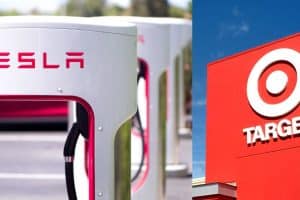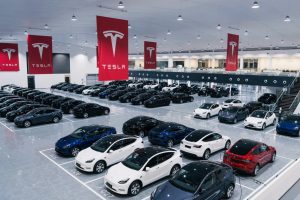- 🚗 Tesla China exported its 1 millionth vehicle from Giga Shanghai.
- 🌍 China-made Teslas have been shipped to Europe, Asia-Pacific, Australia, and New Zealand.
- 🚀 Gigafactory Shanghai is Tesla’s primary vehicle export hub.
- 📆 Giga Shanghai began construction in January 2019 and started exporting in April 2021.
- 🔧 The factory initially produced Model 3 vehicles with deliveries starting in 2019.
Tesla has achieved a significant milestone, with Gigafactory Shanghai exporting its 1 millionth vehicle. This achievement not only underscores the strategic importance of Tesla’s operations in China but also highlights the growing global appetite for electric vehicles (EVs). In this blog post, we will delve into the significance of this milestone, the role of Giga Shanghai as a central export hub, and the future implications for Tesla and the EV market.
The Genesis of Giga Shanghai
A Vision Realized:
In January 2019, Tesla broke ground on a project that would silence skeptics and revolutionize global automotive logistics. Gigafactory Shanghai, often referred to as Giga Shanghai, was designed not only to meet the local demand in China—one of the world’s largest markets for EVs—but also to serve as a formidable export hub.
From Mud Field to Manufacturing Marvel:
Despite initial criticisms dubbing it merely a “mud field,” Giga Shanghai commenced production of Model 3 vehicles within the year. By the end of 2019, these vehicles were already in the hands of Tesla employees, marking the beginning of Tesla’s manufacturing prowess in Asia.
The Journey to a Million: Export Strategy
A Strategic Export Hub:
Tesla’s strategic decision to position Giga Shanghai as its primary export hub has proven to be a masterstroke. Since April 2021, the facility has been consistently exporting vehicles to various regions, including Europe, the Asia-Pacific, Australia, and New Zealand. This decision not only capitalized on the manufacturing efficiencies within China but also utilized its geographic advantage to reach a wide array of markets efficiently.
Key Export Destinations:
- Europe: With a mature automotive market transitioning to EVs, Europe’s demand for Tesla vehicles has been a crucial driver of Giga Shanghai’s export numbers.
- Asia-Pacific: As neighboring markets embrace sustainable solutions, the geographical proximity allows for reduced transportation costs and quicker delivery times.
- Australia and New Zealand: These regions demonstrate a growing affinity for Tesla’s cutting-edge technology and commitment to sustainability.
Production Timeline: Tesla Model 3 and Beyond
The Model 3 Legacy:
Commencing with the Model 3, consumer deliveries began in January 2020. The efficiency and speed with which Tesla transitioned from groundbreaking to delivering vehicles is a testament to the robust planning and execution abilities of the company.
Expanding Product Lines:
Following the successful launch of the Model 3, the Gigafactory expanded to produce the Model Y, catering to the diverse demands of international markets. This flexibility in production has been pivotal to Tesla fulfilling its export strategy and meeting varied customer preferences across different regions.
Implications for Tesla and the Global EV Ecosystem
Sustaining Momentum:
Achieving the export of 1 million vehicles is only the beginning. As global policies continue to favor sustainable and electric vehicles, Tesla is well-poised to further increase its market share and influence in the worldwide auto industry.
Driving the Transition to Sustainable Energy:
Tesla’s overarching mission to accelerate the world’s transition to sustainable energy gains substantial credibility and momentum with each milestone. Giga Shanghai’s success is a microcosm of Tesla’s broader impact on the environment and economy.
Future Prospects
Adapting and Innovating:
Looking ahead, Tesla’s strategy is likely to focus on enlarging its market footprint by further localizing manufacturing and customizing offerings to specific market needs. This adaptive approach will ensure sustained growth and competitive advantage.
Challenges and Opportunities:
While the journey ahead will undoubtedly pose challenges, such as supply chain management and regulatory hurdles, the opportunities for growth and innovation in the EV market remain immense. Tesla’s ability to navigate these will determine its future trajectory.





